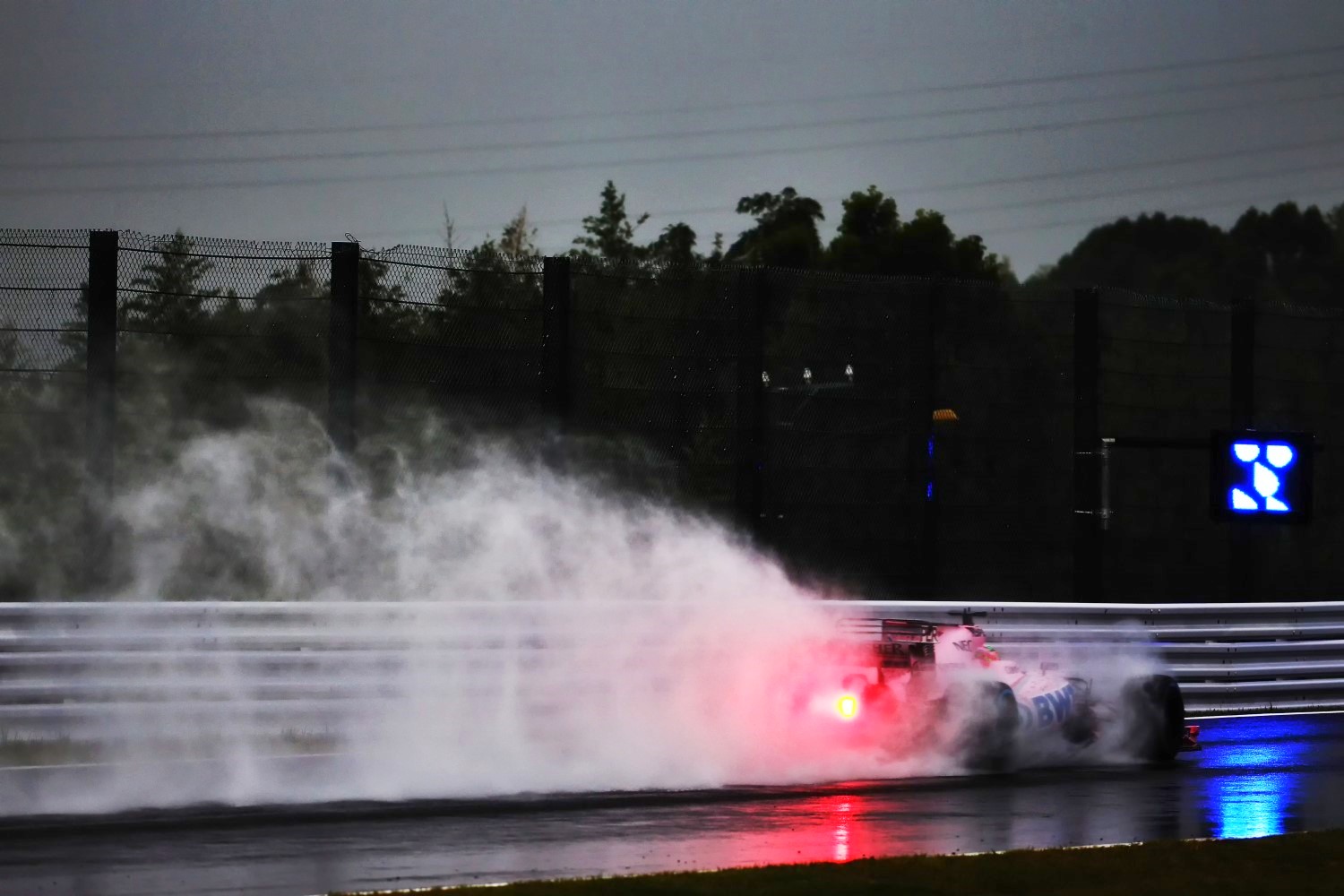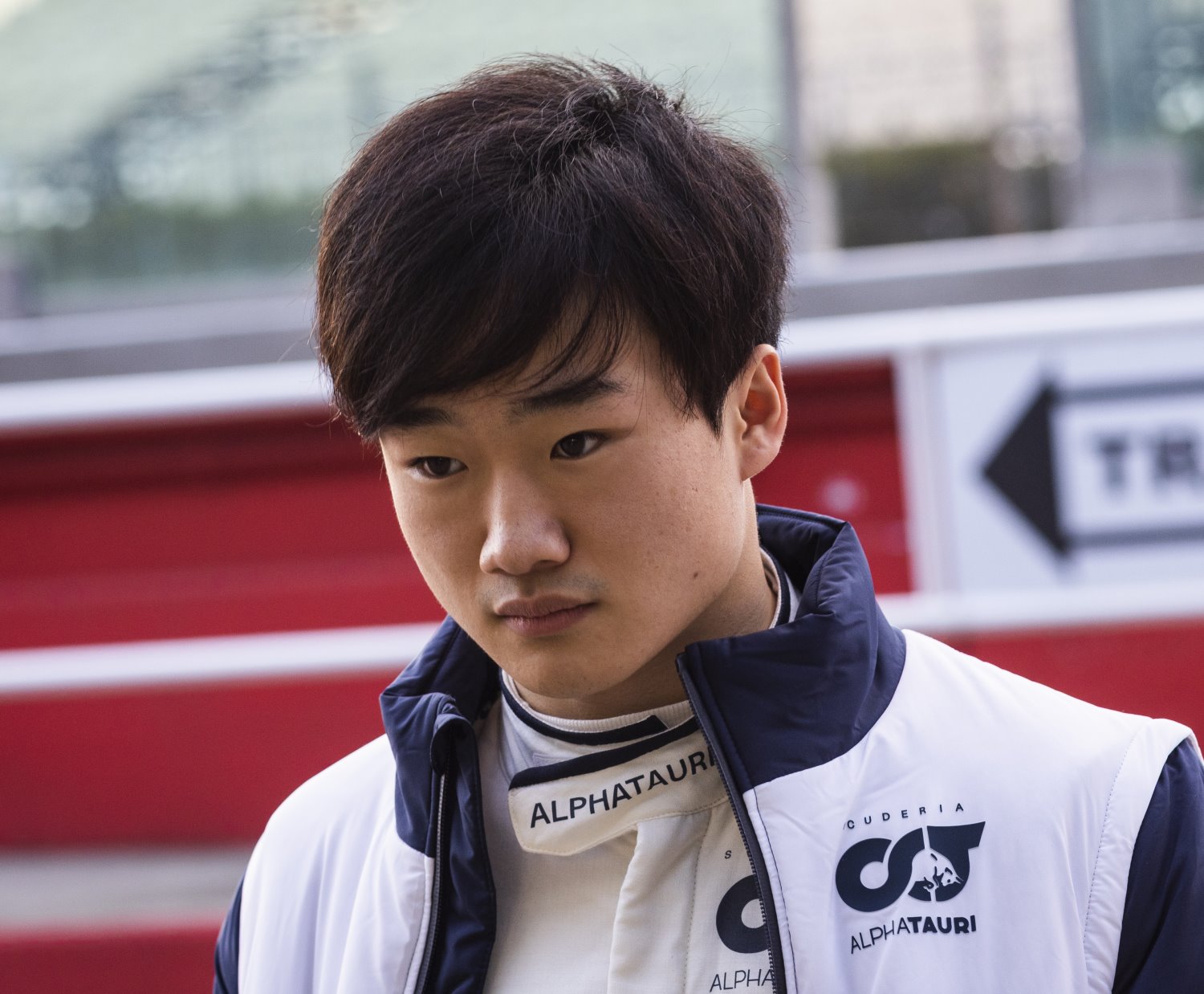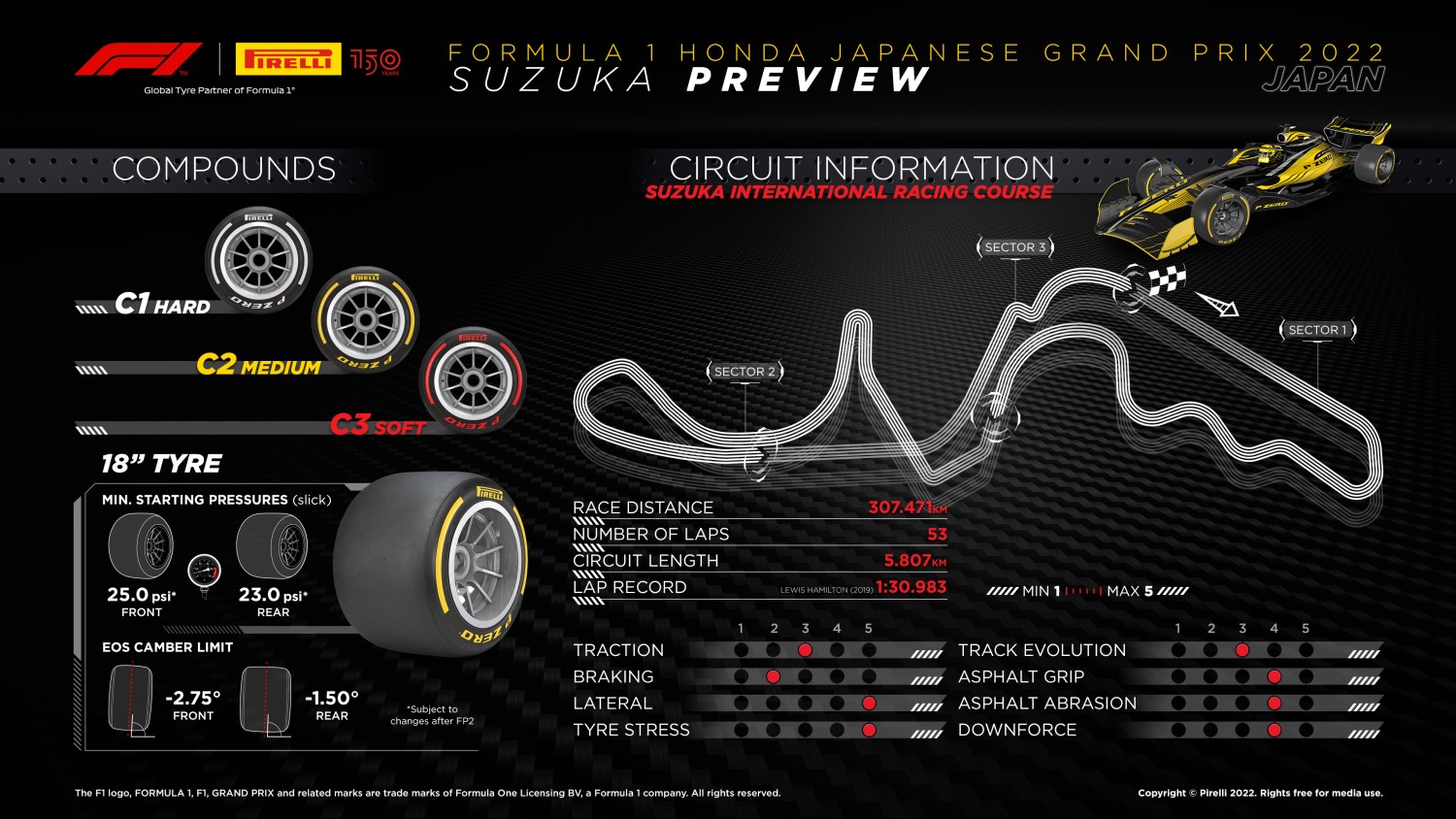F1: Japanese GP Preview
F1 hasn’t been to Japan since 2019 and the teams are really looking forward to being back. It’s such a special track; one of the most challenging for both man and machine. And they’ve missed all the brilliant Japanese fans, too.
The Japanese Grand Prix is one of the most popular venues on the Formula 1 calendar owing to the challenge posed by the rollercoaster 5.8 km circuit, located in the Mie Prefecture on Honshu’s eastern coast. Japan first joined Formula 1’s circus in 1976, at Fuji Speedway, but it was not until 1987 that the figure-of-eight Suzuka circuit welcomed the championship.

With an average speed of 153mph (240km/h), Suzuka is one of the quickest tracks on the F1 calendar.

Suzuka’s place towards the end of the season meant it was the scene of several iconic title-deciding moments in Formula 1 history. The likes of Ayrton Senna, Michael Schumacher, Mika Häkkinen and Sebastian Vettel have all been crowned World Champion at Suzuka.
Suzuka is revered throughout the world as one of motorsport’s finest permanent circuits, with drivers barely having time to breathe through the lap, as they walk a tightrope while pushing their machines to the limit. The first sector is dominated by the Esses, a sequence of narrow sweeping medium- and high-speed corners that rise and plummet, while corners such as Spoon and 130R require total commitment.

The peril is enhanced by the proximity of the grass, gravel traps and barriers, meaning mistakes are regularly punished. Suzuka is also the only circuit on the calendar to feature a flyover, with drivers passing underneath the entry to 130R as they negotiate the exit of Degner 2.
Overtaking is not easy in Suzuka but it is possible and the racing is always good here. The drivers will need to quickly find a rhythm, especially through the Esses, but once they have that, the lap time can improve very quickly.
The tire compounds are from the very stiffest end of the Pirelli range, which we last used in Zandvoort. These tires should work quite well in Suzuka, but if it is cold and damp then they will become more difficult. As part of the 2023 tire development program, all teams will take part in an extended FP2 session this weekend and will test candidate tires for Pirelli. This will complicate our preparations for the race weekend a little, but is important work for 2023.
Unlocking the Lap
Revered by all drivers and one of the most spectacular places to watch a Formula One car on the limit, the opening snake through the Esses is as challenging as it is rewarding. The corners flow into each other, so learning and perfecting these entries and exits is critical to a quick time through the first sector.

There is little rest after the Esses; the Degner section of the circuit – two very tricky right-handers – follows immediately. The first turn is fast but has a very tight exit and it is easy to run wide. The second corner arrives almost straight away – it is slightly banked, but running wide is also commonplace and can ruin a quick-lap.
The left-handed double-apex Spoon Curve precedes the longest flat-out section on the circuit and is crucial to lap-time. The first part is very fast but drivers need to resist the urge to push too soon and run out of road before the second apex. The bend leads onto a long blast up to 130R and is easy to misjudge, being slightly off-camber.
Fact File: Japanese Grand Prix
- Michael Schumacher has won the most races at the circuit with six victories, while Lewis Hamilton could equal that tally with victory on Sunday. Hamilton also set the fastest lap in the course’s history with a 1:30.983 in 2019.
- Suzuka is unique for being the only figure-of-eight track configuration on the calendar – the section after the Degner Curve passes under the straight leading to 130R. Because of this, it’s also the only F1 track that runs both clockwise and anticlockwise.
- This figure-of-eight layout is beneficial for tire wear, with a more even balance between left and right-hand corners (10 being right-handers and eight being left-handers) distributing load more equally between tires.
- The first corner doesn’t require any braking on entry and in Qualifying, drivers don’t hit the brakes until the car is cornering at close to 5G – therefore generating some of the highest steering wheel torques of the season.
- The steering wheel is moving continuously during almost all of the first sector of the lap. From Turn 1 until the exit of Turn 7, the drivers are constantly cornering for around 2km of the lap.
- Most of the 5.807 km lap in Suzuka is spent with some lateral g-force going through the car and in fact, just 1.2 km of the lap is spent driving in a straight line. The lack of straights also mean it is the only track other than Monaco to feature just one DRS zone.
- 130R is one of F1’s quickest corners, taken at 285 km/h, while Turn 11 is one of the slowest, at just 70 km/h.
- The braking zone for Turn 11 is challenging because the drivers are mid-way through the fast Turn 10 when they hit the brakes. They are cornering at around 3.5G when they start applying the brakes, while turning right and then left for the hairpin. This is why lockups are so common at this section of track.
- Suzuka is a very technical track, where a good flow is required because most corners are interconnected. One mistake will impact the next couple of turns.
- It has one of the highest mass sensitivities of the season, which means carrying more fuel will be more penalizing in terms of lap time and performance.
- Whereas in Singapore, the brakes are punished, in Suzuka this is the complete opposite and there are only two real braking points on the track. Therefore, it is one of the lowest of the season for brake duty and wear.
- Overtaking: Surprisingly, this layout tends to feature a lot of overtakes. There is just one DRS zone – on the run down to Turn One – this is the main overtaking spot, despite a very fast entry. Passes can be made under braking at Turns 11 or 16, while Turn 13 is also a popular place to make a move.
Weather Forecast
Friday
Practice threatens to be very wet indeed as a 70+% chance of rain is forecast for both sessions that are scheduled to take place at noon and 3pm local time
Saturday
Qualifying should be dry as the sun is set to shine, with partly cloudy skies. Temperatures will be far more pleasant than Friday.
Sunday
The race could see a mix of sunshine and a 75% chance of rain showers, potentially leading to tricky calls for the teams and drivers.

Japanese Driver Yuki Tsunoda Perspective
“My first visit to Singapore did not go the way I had hoped. We had not looked great on Friday but recovered enough to get to Q3 which I was pleased about. In the race, the conditions were very tricky and I think we switched to the slick tires a bit too early. But having said that, it was my mistake; I misjudged my braking point and crashed. Now, I’m going to put that behind me and focus on this coming weekend for my very first home race in Formula 1.

In one way, Japan is just another race, but in another it is one I have been looking forward to ever since I started in Formula 1. I used to drive at Suzuka quite a lot in Formula 4, so I have some experience of it, but when I recently drove the track in the simulator, in a Formula 1 car, it’s a very different world. Actually, because you have so much more downforce, I think you are on the throttle for more of the lap in a Formula 1 car than in Formula 4. The view of the track changes completely and it’s like a whole new track. My experience there from the past will still be useful and I remember how to drive Suzuka. I am looking forward to racing there in front of my home fans very much.
I know there will be a lot of interest from the fans for this race. I can’t imagine what it will be like, so it will be very different to every other race weekend, but I am looking forward to enjoying a new experience. I am happy about the attention; I am the sort of person that does not feel much pressure from other people anyway. When I’m driving, I only pay attention to myself and all that support will give me extra energy on every lap in a positive way, and that will be helpful and nice. Many of my friends and family will be coming to Suzuka and I know that even those for whom I couldn’t get passes, have bought tickets. And a very important final point, I get to eat Japanese food for a whole week!”
Which drivers have won the Japanese Grand Prix?
There have been 18 different winners of the Japanese Grand Prix since 1987 with Michael Schumacher being the most successful of them. Mario Andretti won the inaugural race hosted in 1976 at the Fuji circuit, while Gerhard Berger was the first victor at Suzuka.
Of the drivers currently on the gird, four have won there, including Hamilton, Valtteri Bottas, Sebastian Vettel and Fernando Alonso.
Hamilton (five), Vettel (four) and Alonso (two) have all won multiple times there.
The last 10 winners of the Japanese Grand Prix:
2010 – Sebastian Vettel
2011 – Jenson Button
2012 – Sebastian Vettel
2013 – Sebastian Vettel
2014 – Lewis Hamilton
2015 – Lewis Hamilton
2016 – Nico Rosberg
2017 – Lewis Hamilton
2018 – Lewis Hamilton
2019 – Valtteri Bottas
Pirelli Tires
The trio of hardest compounds return in Japan: C1 as the P Zero White hard, C2 as the P Zero Yellow medium, and C3 as the P Zero Red soft. This will be the final outing for the hardest C1 compound this year.
The second free practice session in Japan has been extended to 90 minutes in order to allow 2023 prototype slick tire testing (with the same arrangement in place for the United States Grand Prix). The Suzuka and Austin tests are there to fine-tune the compounds for 2023, with the entire FP2 session devoted to tire testing. If a team uses a young driver for FP1, it is allowed to run its own program for the first 30 minutes of FP2, before concentrating on the tire test for the remainder of the session. The prototype tires can easily be recognized as they won’t carry colored markings on the sidewalls.
Like Singapore that came just one week before, the Japanese Grand Prix was last held in 2019. The challenge is made even greater with the teams having to approach the circuit, weather conditions, and set-up in a completely new way with the latest generation of cars and tires.
Suzuka is all about lateral forces rather than traction and braking, but the loads are quite evenly balanced between the left and right hand sides of the car. The cars and tires are subjected to some of the longest sustained g force loadings seen throughout the year. 130R, for example, is a long radius corner (of 130 degrees) but it’s taken flat-out, as if it were a straight.

MARIO ISOLA – MOTORSPORT DIRECTOR
“The only circuit that features a figure of eight, where demands on tires are equally balanced”
“Ask the drivers which are their favorite circuits and Suzuka will always be high on the list: it contains demanding corners like nowhere else, such as 130R and Spoon, as well as a truly special atmosphere and history with incredible fans. There’s a roughly equal number of left and right corners in the unique figure of eight layout, which means that the circuit demands are evenly balanced. The sustained energy loads through the tires are some of the highest we register all year, and the track layout means that we bring the three hardest compounds in our range because of the high levels of tire duty. With the latest generation of cars being heavier than before and the limits of performance constantly being pushed, that challenge is bigger than ever now. An innovation for this year is the fact that we will be testing some 2023 prototype tires during an extended free practice session on Friday afternoon, as we finalize the specification for next year with the end of this season approaching.”
